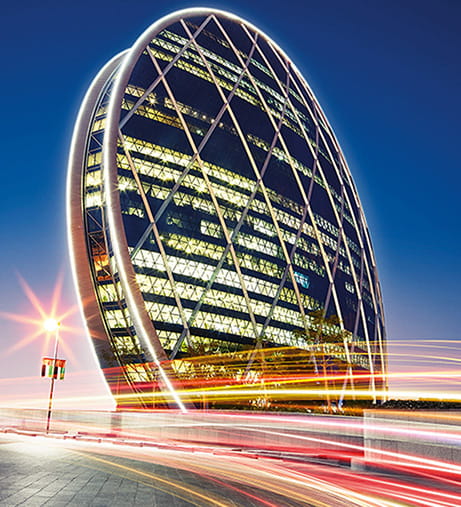#Featured
December 14, 2023
Build Greener Spaces with Advanced Sustainable Materials
As sustainability becomes a cornerstone in modern real estate, more homeowners are seeking eco-friendly homes designed with sustainable building materials. These materials are transforming how we build and view our living spaces, offering solutions that reduce environmental impact while maintaining high standards of quality and comfort.
In this exploration, we’ll explore the most popular sustainable materials and innovative approaches to reshaping sustainable building. By embracing these advancements, you can contribute to a greener future while creating a home that reflects your commitment to the environment.
Bamboo
Bamboo is a type of grass that grows quickly and has many uses, including construction for practical and decorative purposes. Because of its quick growth, it is an environmentally friendly option and can be harvested without harming the environment. Bamboo is also flexible, allowing for creative designs in modern architecture. As a result of its strength and aesthetic, it has become increasingly popular for eco-friendly housing project.
Recycled Plastic
Plastic waste recycling revolutionises construction, offering a sustainable substitute for traditional materials. This method curtails pollution and yields durable, long-lasting components and sustainable building materials. Recycled plastic, known for its resistance to corrosion and lower carbon footprint, is ideal for outdoor applications like furniture, decking, and fencing, thanks to its robustness and weather resistance.
Mass Timber
Mass timber is an excellent choice for buildings in earthquake-prone regions. Not only does it look great and have a warm ambience, but it also performs well in earthquakes. This material is preferable to steel and concrete, as it reduces greenhouse gas emissions. As a result, mass timber is becoming increasingly popular for constructing large apartments and schools.
Cork
Cork is a natural material made from the bark of cork oak trees. It is often used as sustainable flooring because it provides excellent insulation and is renewable, resistant to mould, and hypoallergenic. Additionally, cork flooring is stylish and practical, with a unique look that complements various interior designs. Cork is also used for wall coverings and underlayment because it absorbs sound.
Precast Concrete Slabs
This building material is considered sustainable since it is manufactured in advance. A factory produces precast concrete slabs before they are transported to the construction site. This approach allows for better control over the quality, resulting in less waste and more efficient resource use. Precast concrete is also adaptable to various architectural styles and applications, making it versatile. It is commonly used to build walls, floors, beams, and columns.
Reclaimed Wood
Reclaimed wood is sourced from old buildings, barns, and other structures with a unique history and aesthetic that new materials cannot replicate. It is an environmentally responsible choice that helps reduce deforestation and waste. Each piece of reclaimed wood has its own character, adding warmth and history to any space it's used in. People often seek this wood for its rustic appearance and the unique character it brings to furniture and architectural details.
Recycled Steel
Recycled steel is a material that is produced by melting scrap steel and then reforming it. It can be used in various construction applications, like building frames, roofing, and concrete reinforcement. Using recycled steel in construction is sustainable since it requires less energy than producing new steel from raw materials. Recycled steel maintains the same strength and durability as new steel, making it a suitable alternative for construction. Additionally, it contributes to a circular economy by reusing materials instead of disposing of them.
Plant-based Polyurethane Rigid Foam
This foam is an eco-friendly insulation material made from natural plant materials like bamboo, hemp, and kelp. Compared to traditional materials, it provides superior insulation and is easy to handle and install because it is lightweight. Since it is made from plant-based materials, it is renewable and has a reduced environmental impact. It is often used in walls, roofs, and floors for its excellent insulation properties.
Mycelium
Mycelium is a material made from the root structure of fungi. It can be used for temporary structures or installations. It is a great choice for reducing construction waste since it's biodegradable and can be composted at the end of its life. Mycelium is one of many innovative sustainable building materials that push the boundaries of eco-friendly design. Some possible uses of mycelium in sustainable construction include packaging, insulation, and leather alternatives.
Ferrock
Ferrock is a new construction material made from recycled steel dust. Its unique composition makes it more resistant to cracking than conventional concrete, enhancing its durability and reducing maintenance needs. Ferrock is an eco-friendly material that has the added benefit of being carbon-negative. During the drying process, it absorbs carbon dioxide, which is a significant environmental advantage. This material is ideal for use in areas where strength and durability are necessary, such as foundations and load-bearing structures. Although it is still experimental, Ferrock shows excellent promise for becoming a widely used construction material.
Timbercrete
Timbercrete is a building material made from sawdust and concrete. It's lighter than regular concrete, making it easier to handle on construction sites and reducing transportation's environmental impact.
Timbercrete provides better insulation than traditional concrete, helping to save energy in buildings. It's also fire-resistant, adding to its safety benefits for construction projects. Timbercrete can be used to make bricks, blocks, and panels that combine the thermal properties of wood with the strength of concrete.
Building a Greener Future From Our Homes
Our approach to building environmentally friendly homes benefits the planet and influences how we design and build our homes. With growing awareness of ecological issues and increasing accessibility of greener technologies, adopting sustainable building materials and practices is becoming more common. This trend towards eco-conscious construction reflects our commitment to protecting the environment.
It's essential to embrace this change to contribute to creating a more sustainable world through real estate. We can also understand the principles of sustainable home design and how to improve energy efficiency in our homes. By choosing eco-friendly options, we can positively impact the planet. These efforts lead to more environmentally responsible buildings and signify our collective commitment to protecting the environment.

